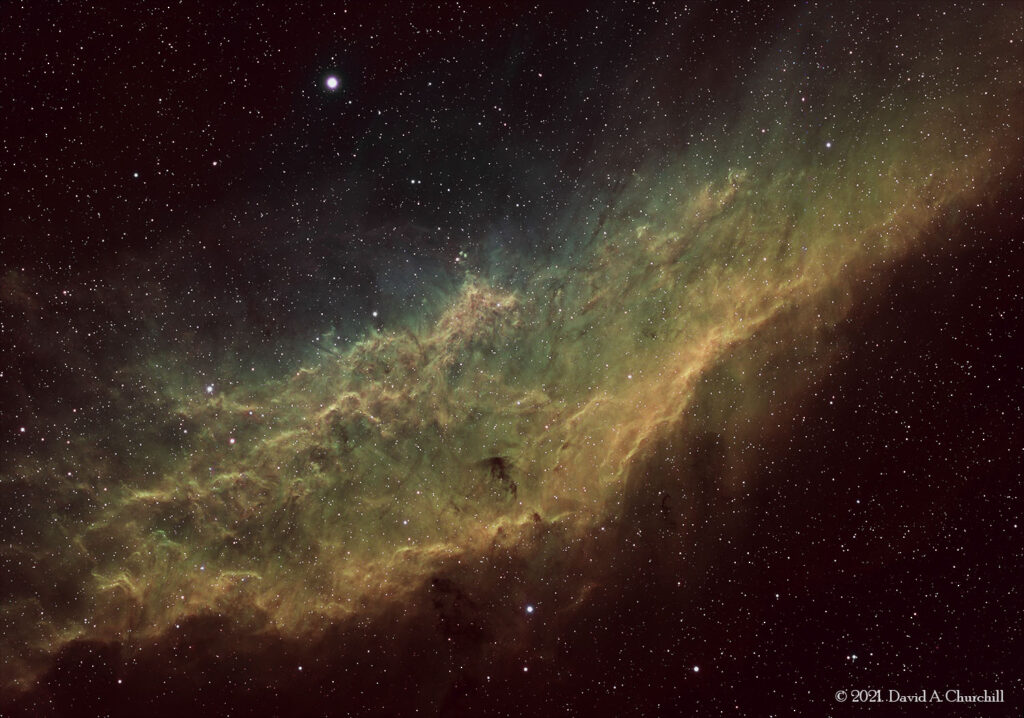NGC 1499
The California Nebula, Emission Nebula. Perseus
- Description
- Technical
- Links
The California Nebula (NGC 1499) is an emission nebula located in the constellation Perseus. It is so named because it appears to resemble the outline of the US State of California on long exposure photographs. It is almost 2.5° long on the sky and, because of its very low surface brightness, it is extremely difficult to observe visually. It can be observed with a Hα filter (isolates the Hα line at 656 nm) or Hβ filter (isolates the Hβ line at 486 nm) in a rich-field telescope under dark skies. It lies at a distance of about 1,000 light years from Earth. Its fluorescence is due to excitation of the Hβ line in the nebula by the nearby prodigiously energetic O7 star, Xi Persei (also known as Menkib, seen at center below it in the inset at right). The California Nebula was discovered by E. E. Barnard in 1884. By coincidence, the California Nebula transits in the zenith in central California as the latitude matches the declination of the object.
Telescope: Astro Physics 305 Riccardi Honders Astrograph f3.8
Mount: Astro Physics 3600GTO “El Capitan”
Camera: FLI ML50100 / CFW10-7
Guider: Mini Borg 50 / SBIG STi
H-alpha: 32×15 mins = 480 mins, OIII: 39×15 mins = 585 mins, SII: 37×15 mins = 555 mins
Total Imaging Time: 27h 00m
Data Imaged remotely over 9 nights during September/October 2017 & October 2020.
Data acquisition & Processing by David Churchill.
None

